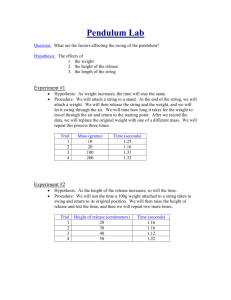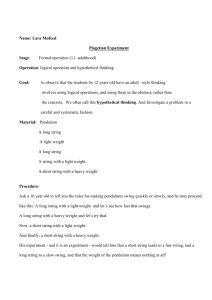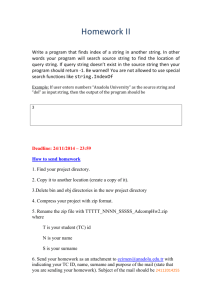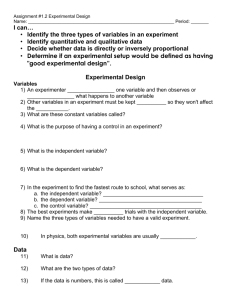Science IA Pendulum Lab
advertisement
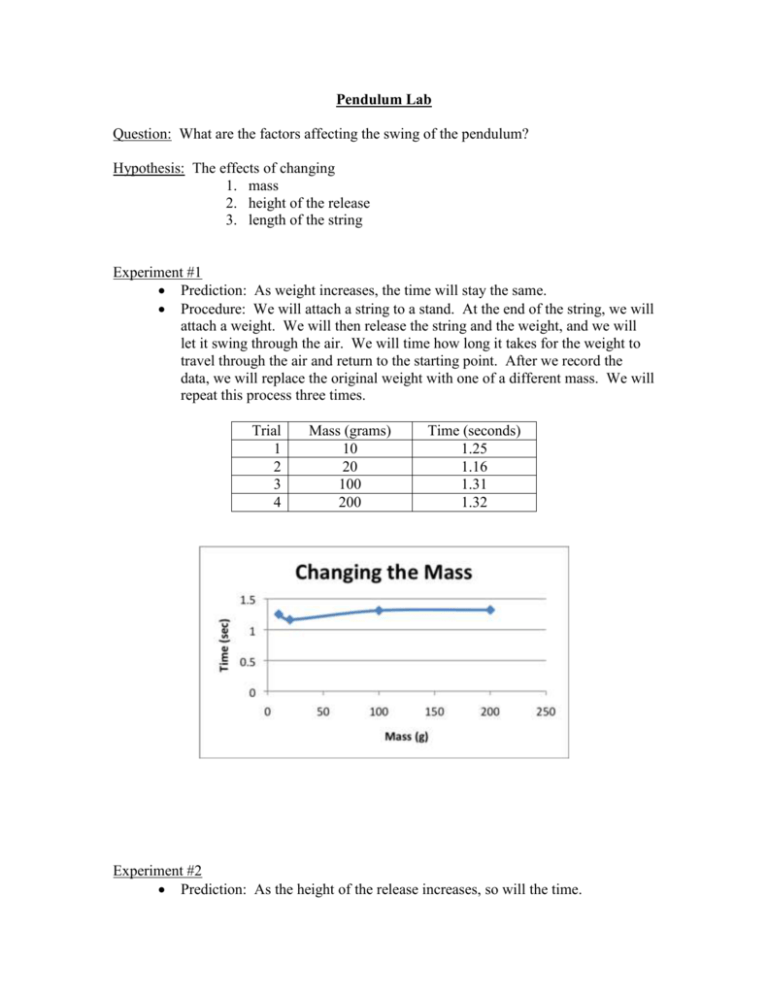
Pendulum Lab Question: What are the factors affecting the swing of the pendulum? Hypothesis: The effects of changing 1. mass 2. height of the release 3. length of the string Experiment #1 Prediction: As weight increases, the time will stay the same. Procedure: We will attach a string to a stand. At the end of the string, we will attach a weight. We will then release the string and the weight, and we will let it swing through the air. We will time how long it takes for the weight to travel through the air and return to the starting point. After we record the data, we will replace the original weight with one of a different mass. We will repeat this process three times. Trial 1 2 3 4 Mass (grams) 10 20 100 200 Time (seconds) 1.25 1.16 1.31 1.32 Experiment #2 Prediction: As the height of the release increases, so will the time. Procedure: We will test the time a 100g weight attached to a string takes to swing and return to its original position. We will then raise the height of release and test the time, and then we will repeat two more times. Trial 1 2 3 4 Height of release (centimeters) 20 30 40 50 Time (seconds) 1.16 1.16 1.12 1.22 Experiment #3 Hypothesis: We don’t think that the length of the string will affect the time. Procedure: We will test how long it takes for a 100g weight attached to a string to swing from one point and back to the same point. We will use various lengths of string to test the times of the swing. Trial 1 2 3 4 Length of String (centimeters) 17 30 37 60 Time (seconds) .81 1.06 1.15 1.53 Conclusion After completing three experiments, we concluded that the only factor affecting the time of the swing of a pendulum was the length of the string (Experiment #3). The prediction for Experiment #3 was incorrect, as was the prediction for the weight on the string (Experiment #1). The period increased as the length of the string increased. The following graph shows how the length of the string (the independent variable) affects the time (the dependent variable).

